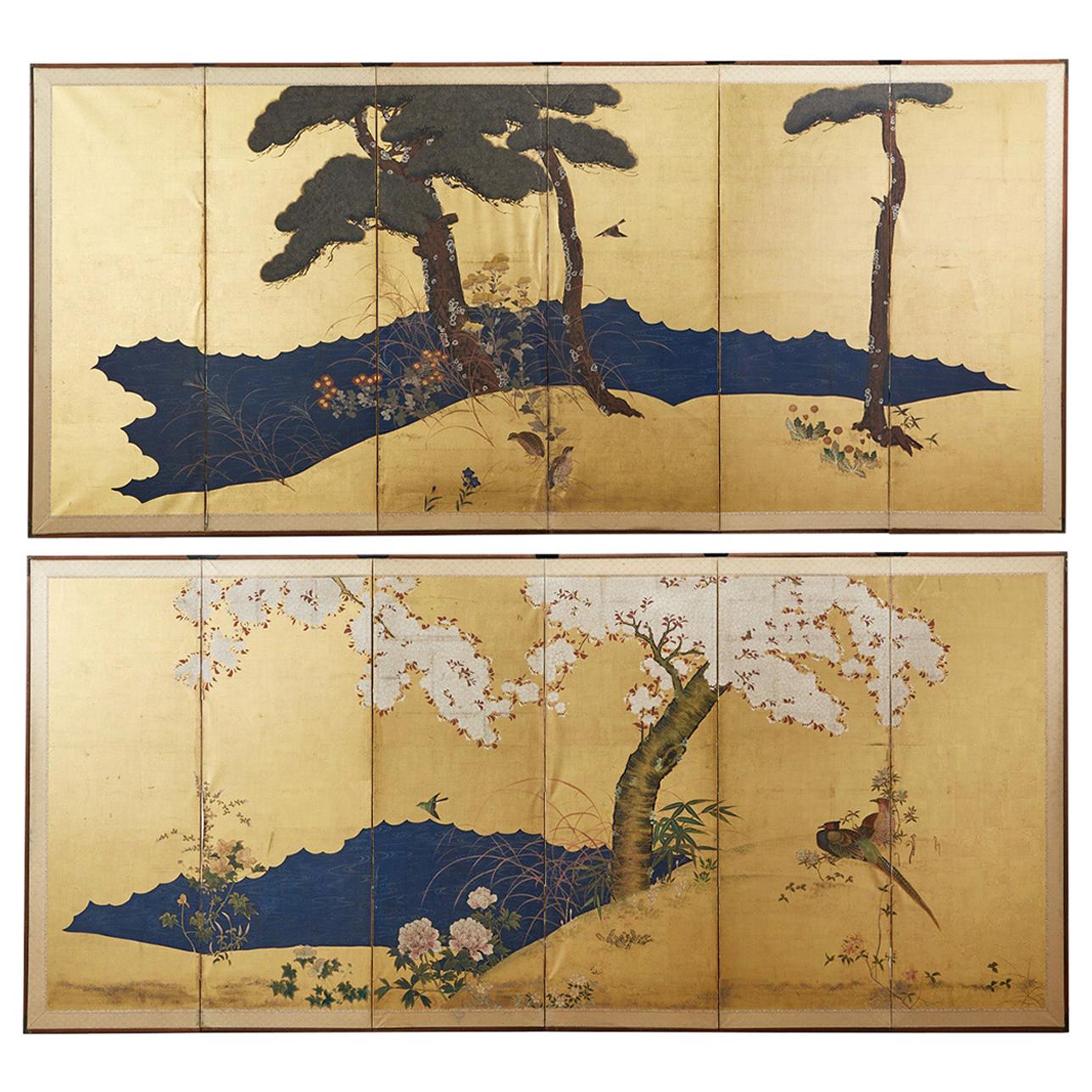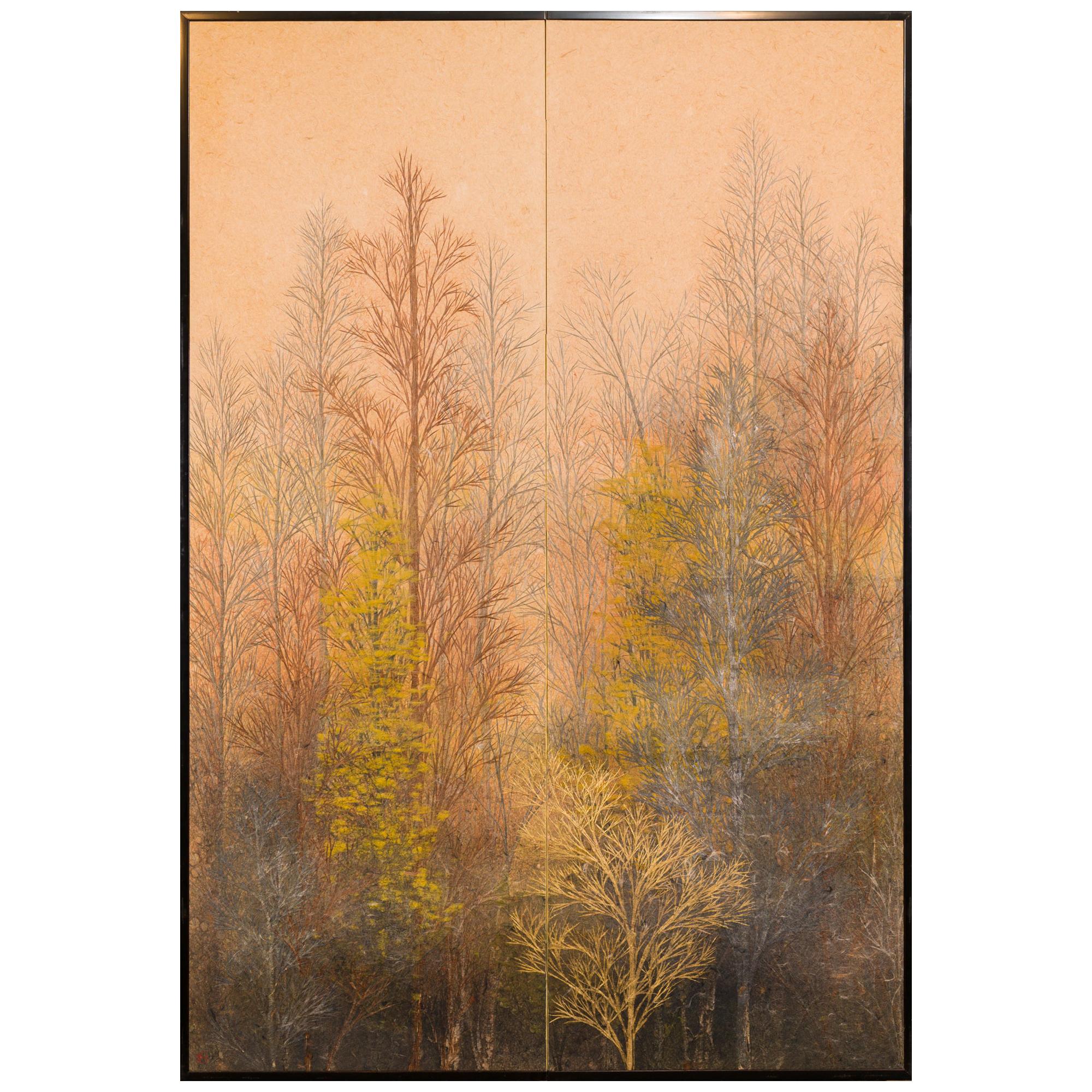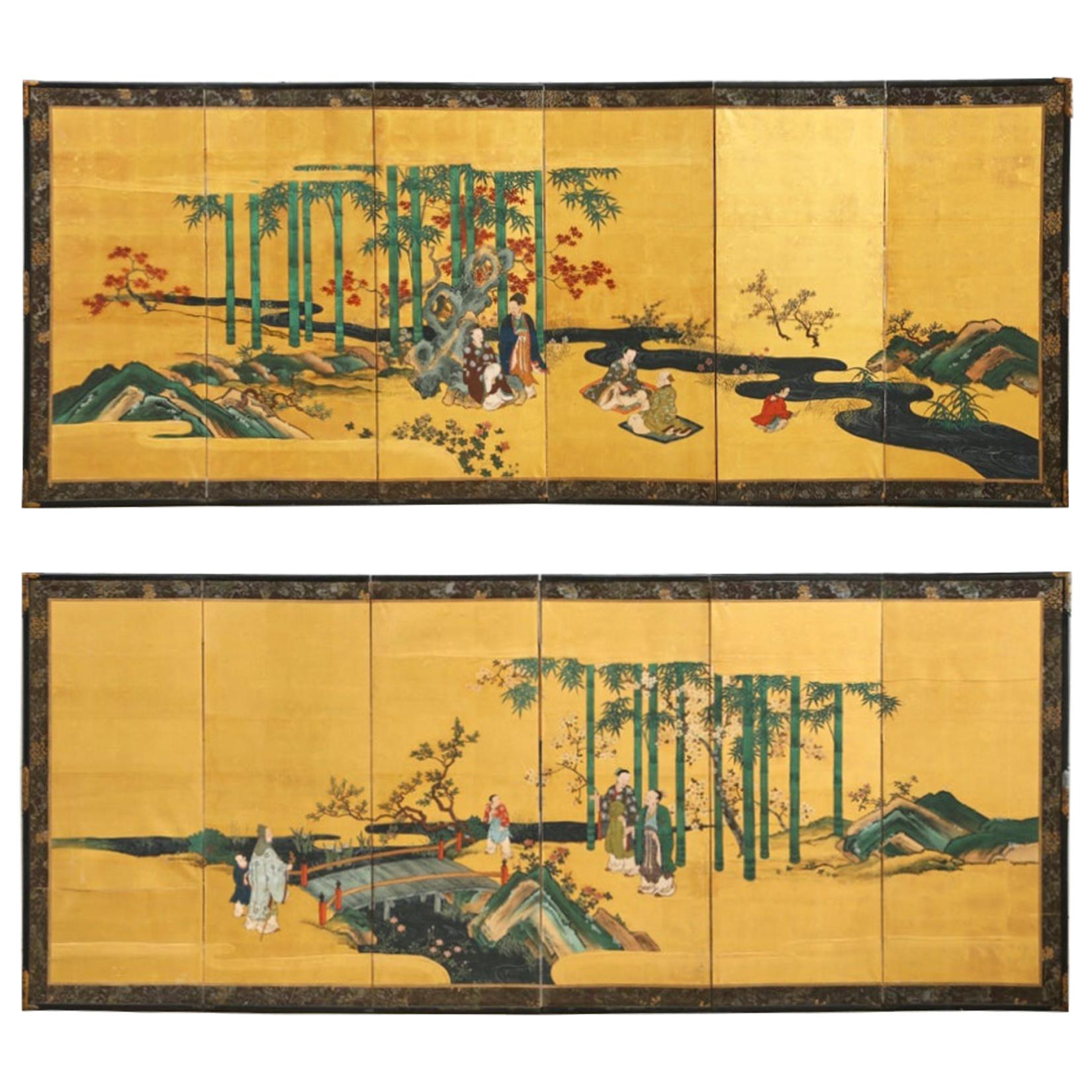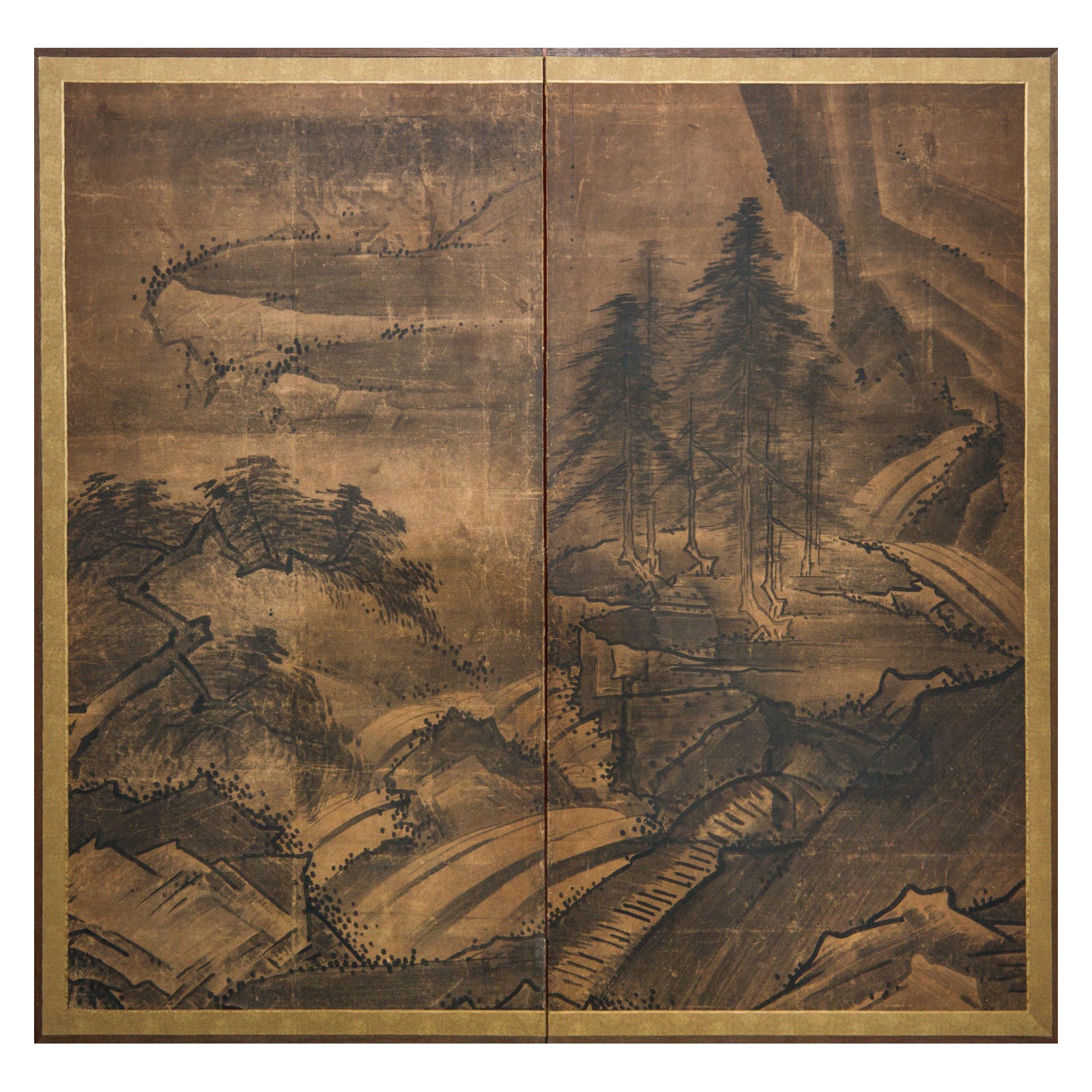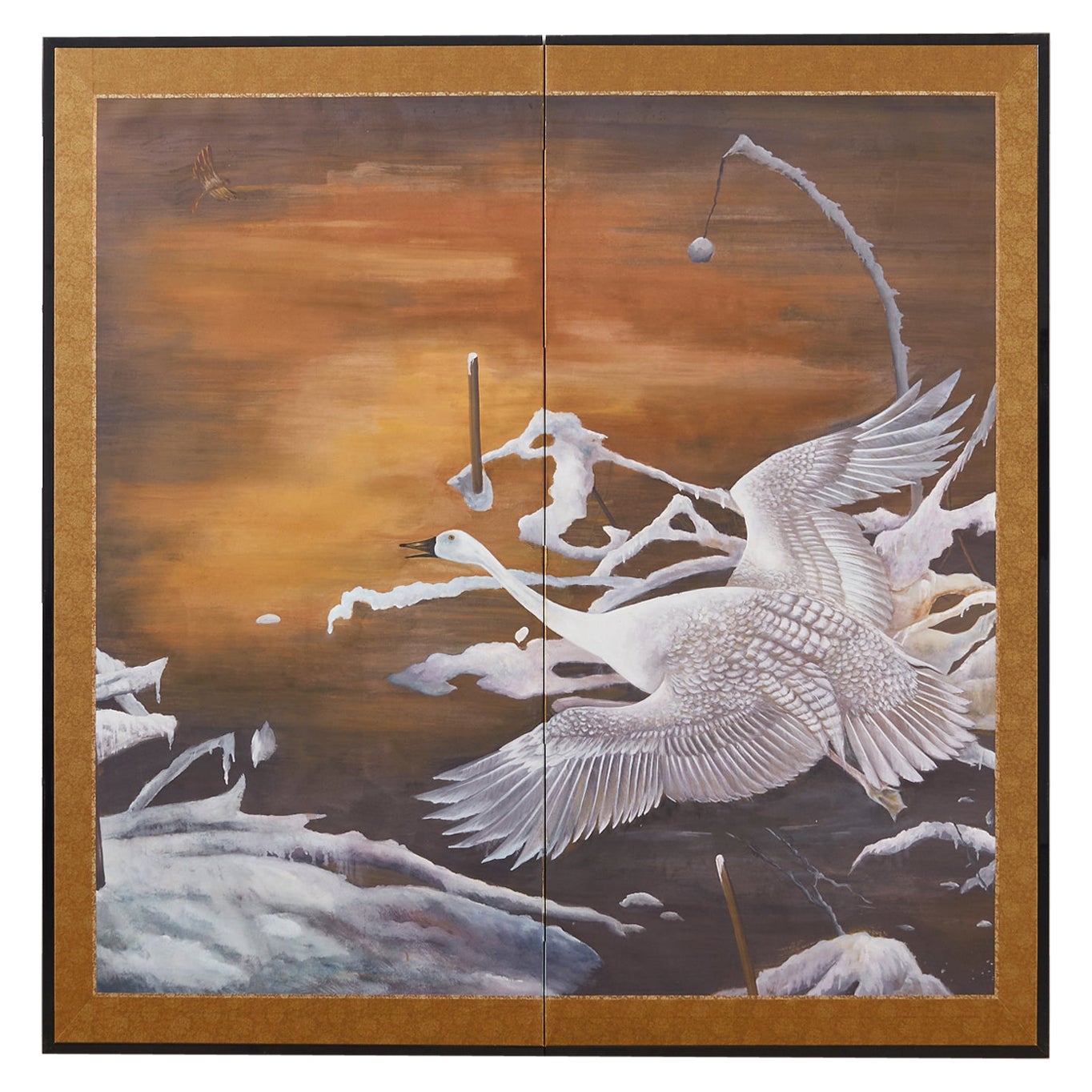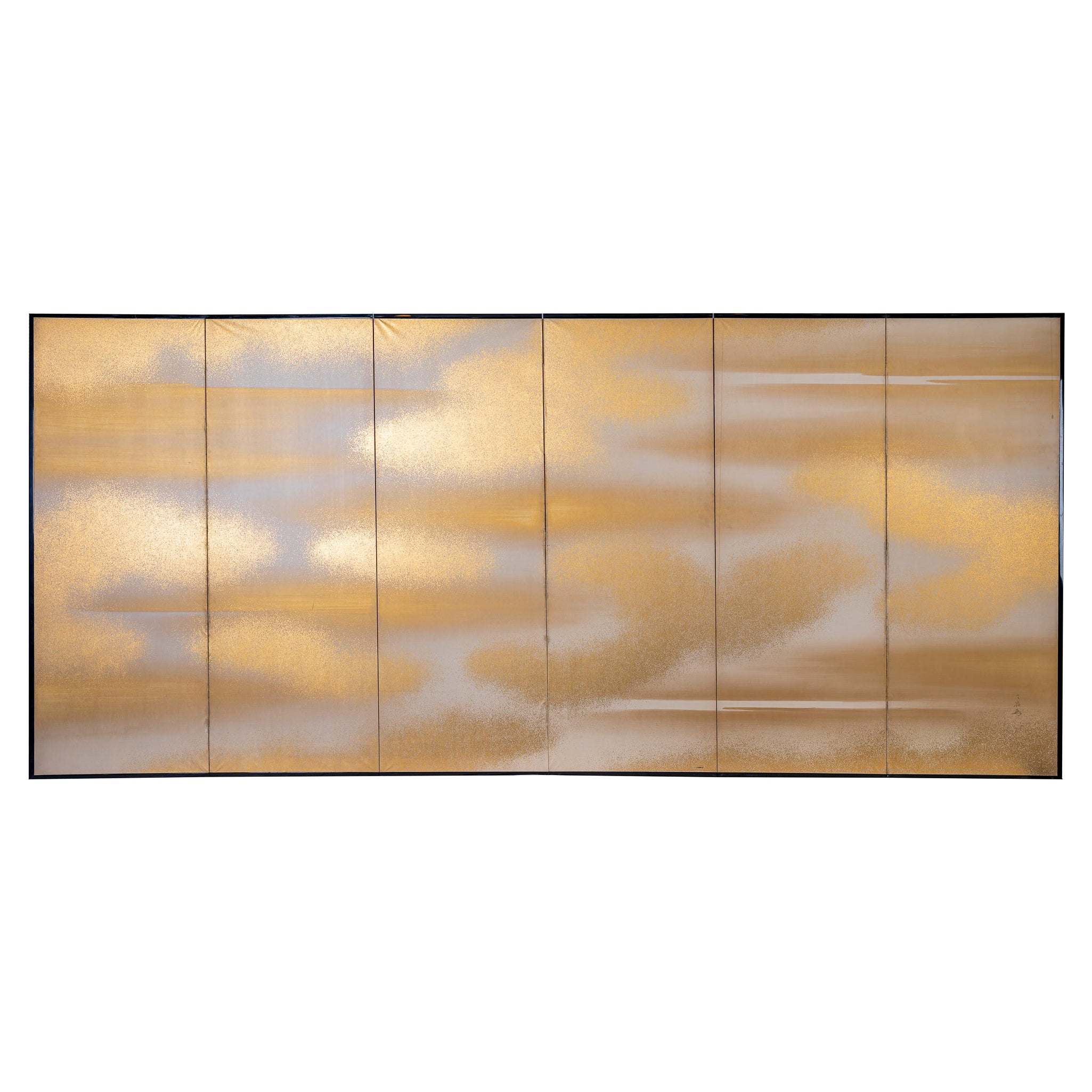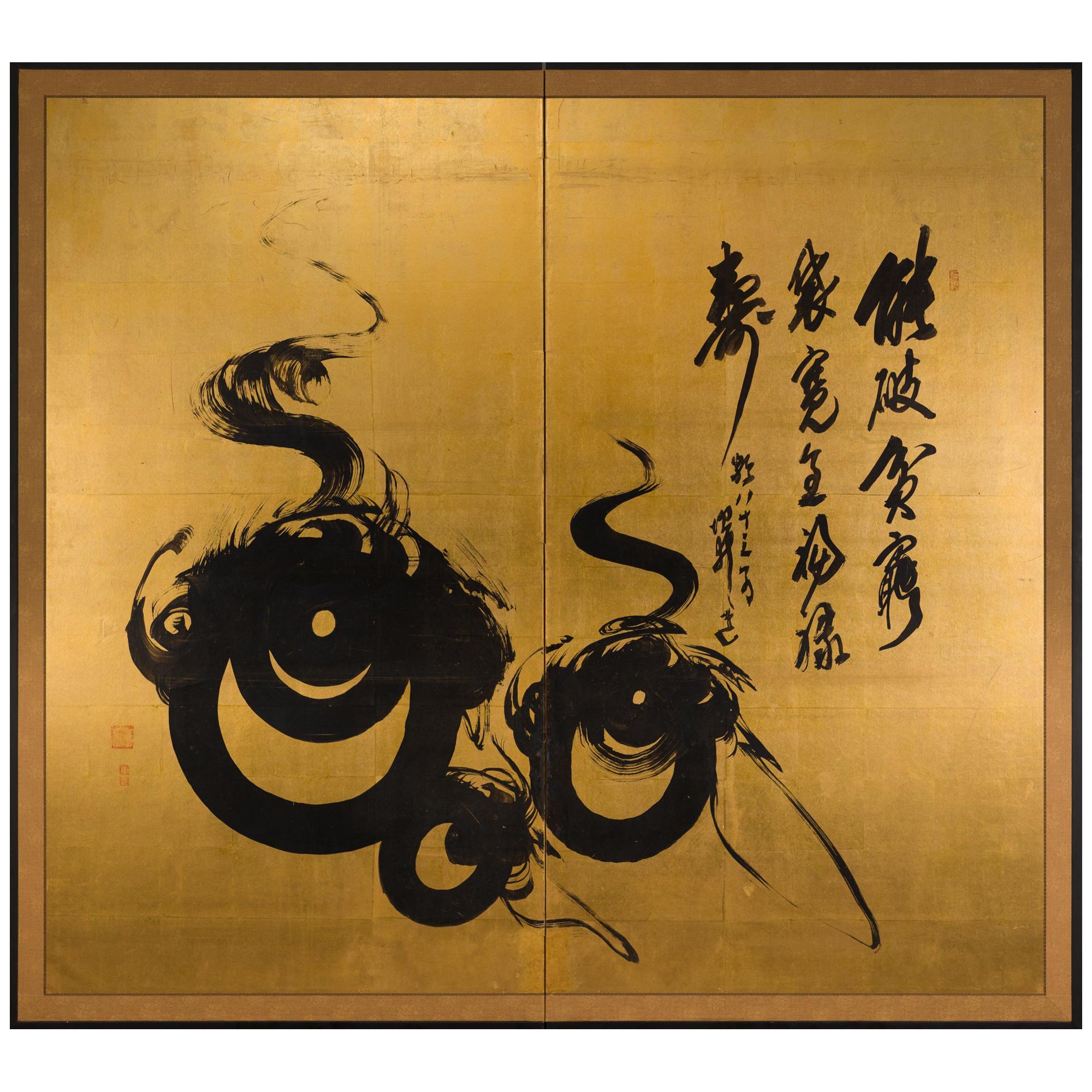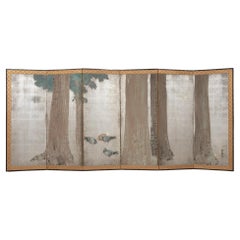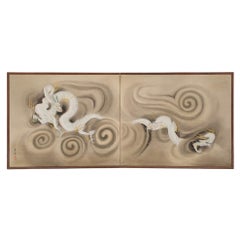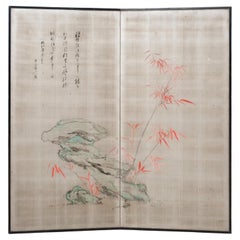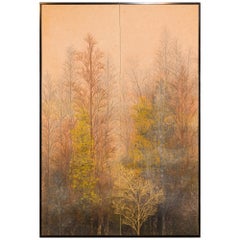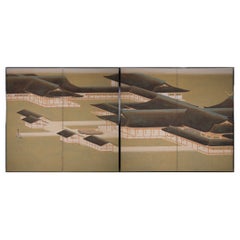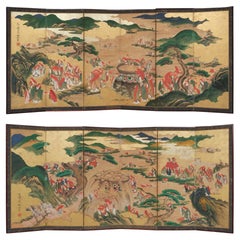
Pair of Rare Japanese Large 6-Panel Momoyama-Style Screens of Festive Shôjô
View Similar Items
Want more images or videos?
Request additional images or videos from the seller
1 of 21
Pair of Rare Japanese Large 6-Panel Momoyama-Style Screens of Festive Shôjô
About the Item
- Dimensions:Height: 68.27 in (173.4 cm)Width: 150.01 in (381 cm)Depth: 0.63 in (1.6 cm)
- Materials and Techniques:
- Place of Origin:
- Period:
- Date of Manufacture:1600-1868
- Condition:Repaired: Some old restorations, mainly along the hinges, front and back. Please look at the photos for a clear representation. Wear consistent with age and use. Minor losses. Considering their age of at least 200-250 years (maybe even older), they are both in a good restored condition with traces of age and wear. For a clear condition reference, please take a close look at the (detail)photos.
- Seller Location:Amsterdam, NL
- Reference Number:Seller: 211129+2111301stDibs: LU7165232040642
About the Seller
5.0
Vetted Seller
These experienced sellers undergo a comprehensive evaluation by our team of in-house experts.
Established in 1996
1stDibs seller since 2022
16 sales on 1stDibs
Typical response time: 8 hours
More From This SellerView All
- Large Japanese 6-Panel Byôbu 'Folding Screen' by Imperial Household Artist 小室翠雲By Komuro SuiunLocated in Amsterdam, NLExquisite, rare and large six-panel byôbu (room divider) with a refined continuous 'Nihonga'-painting on silver leaf of doves (hato) in a pine tree forest (matsu), by the famous Japa...Category
Early 20th Century Japanese Paintings and Screens
MaterialsSilver Leaf
- Japanese 2-Panel Furosaki’byôbu 風炉先屏風 'Tea-Ceremony Folding Screen' with DragonsLocated in Amsterdam, NLA striking low and wide two-panel furosaki’byôbu (tea-ceremony room divider) painted with two bright white dragons (ryû) flying amidst swirling black clouds. The left dragon holds a ...Category
Early 20th Century Japanese Paintings and Screens
MaterialsWood, Paper
- Large Japanese 2-Panel Byôbu 屏風 'Room Divider' with Painting of Bamboo & a PoemLocated in Amsterdam, NLBeautiful, large two-panel byôbu (room divider) with a serene painting of red-leaved bamboo and rocks on an oxidized silver leaf background. Silver leaf continuously undergoes the process of oxidation, which creates a beautiful aged patina. On the left an inscription from a ‘Zekku’ poem by the Chinese poet Yang Zai (1271?1323), titled: Shan shang zhu (bamboo (painted) on a fan). Translated as : Why would people plant a lot of bamboos? The shade of a single culm is also beautiful. In the autumn night it rocks on the wind, And the fresh sound echoes in my dream. Dated: Shôwa, the year kôshin (1938). Signature unknown...Category
Early 20th Century Japanese Paintings and Screens
MaterialsOther, Silver Leaf
- Japanese screen with a painting of an large elephant & monkey by Mori Kanson 森間村Located in Amsterdam, NLJapanese large six-panel byôbu (room divider) with a rare painting of a large white elephant with a monkey on its shoulder, standing under a Paulownia tree (kiri) in bloom. The Paulownia is considered in Japanese symbolism as the tree of life. The elephant has been painted on purpose in a "non fitting" manner - partly going beyond the frame to underline the size of this impressive and important animal. The combination of the elephant and a monkey painted...Category
Antique 19th Century Japanese Paintings and Screens
MaterialsMetal
$12,911Free Shipping - Japanese Mid-Size 6-Panel Byôbu 屏風 Screen with Chicken Family in a Flower FieldLocated in Amsterdam, NLA charming medium-size six-panel byôbu (folding screen) with a vibrant polychrome painting of a rooster with its family amidst a luscious flower garden. The garden is filled with al...Category
Early 20th Century Japanese Paintings and Screens
MaterialsSilk, Lacquer, Paper
- Pair of Japanese Mid-Size 6-Panel Byôbu with a Bridge Crossing the Uji River 宇治川Located in Amsterdam, NLA pair of exceptional high quality medium-size six-panel byôbu (room divider) with an outstanding continuous painting on gold leaf of a bridge crossing the Uji river in southeast Kyôto with a waterwheel turning next to it and surrounded by willows (yanagi). Under a moonlit sky, a golden bridge sweeps upward in a strong diagonal from the right screen to the left above the deep blue river with silver swirls. The three willows at the right, middle, and left have small, delicate leaves, which is a sign of spring. The impressive tree trunks are executed in a thick shiny layer of lacquer accentuated by sprinkled mother-of-pearl (raden) in the curves, creating more depth. The embankments are protected by four stone-filled baskets (three on the left screen and one on the right). In between the ones on the left, a waterwheel is turning in the stream. The waves created by this movement are extra emphasised by being heightened in gofun, which is the refined powder of the itabo oyster (Ostrea denselamellosa). The bridge itself is executed in glistening gold-leaf and flanked by gold-specked white railings in low relief. The scene is shone upon by the glowing silver moon high in the sky and surrounded by gold-speckled clouds. Paintings that combine willows with a bridge and waterwheel over the Uji river, are a view long celebrated in literary works such as The Tale of Genji, or associated with Buddhist beliefs in salvation. Paintings of the Uji Bridge...Category
Early 20th Century Japanese Paintings and Screens
MaterialsGold Leaf
$19,530 / setFree Shipping
You May Also Like
- Pair of Japanese Meiji Six Panel Screens of Seasonal LandscapesLocated in Rio Vista, CAFascinating pair of large Japanese Meiji period six-panel screens of seasonal landscapes with flowers and birds. The first screen depicts a pair of pheasants in a spring landscape with a white flowering cherry tree, peonies, and rose of Sharon with brush clover. The second screen depicts a pair of quail in an autumn landscape with flowering autumn plants and grasses including chrysanthemums, bellflowers, and ominaeshi. The umbrella pines appear to be in the manner of Kano Tanyu...Category
Antique 19th Century Japanese Meiji Paintings and Screens
MaterialsBrass, Gold Leaf
- Japanese Two Panel Screen Late Autumn Forest, Rare Obara Paper Art ScreenLocated in Hudson, NYA masterful landscape made entirely of carefully arranged mulberry paper fibers in a Japanese art practice called Obara. Accented with gold leaf. Incredible craftsmanship and a wonderful rendering of bare trees. Made by Yamauchi Issei (b. 1929), stamped in the corner. Issei is well known throughout Japan as the leading artist in Obara Paper Art. Starting in 1948, he apprenticed with Fuji Tatsukichi, a leading proponent of the arts and crafts movement in Japan who worked to Revive many cultural traditions on the brink of extinction. Issei started exhibiting in the Nitten in 1953, won the Gold Medal in 1963, and eventually became a juror. His artwork was given as a gift to the Showa Emperor of Japan, as well as dignitaries such as General Douglas MacArthur...Category
Mid-20th Century Japanese Showa Paintings and Screens
MaterialsGold Leaf
- Pair of Japanese Two Panel Screens, Itsukushima Shrine in MiyajimaLocated in Hudson, NYPigment on silk. Various walkways interconnecting the temple complex with one lone figure of a woman. Back paper is hand-stamped with mica paint. Signature and seal read: GekkanCategory
Early 20th Century Paintings and Screens
MaterialsSilk
- Pair of Japanese Edo Six Panel Screens the Seven SagesLocated in Rio Vista, CAFantastic pair of 19th century Japanese late Edo/early Meiji period six-panel screens titled The seven sages of the bamboo grove. The Kano school screens...Category
Antique 19th Century Japanese Edo Paintings and Screens
MaterialsBrass, Gold Leaf
- Japanese Two Panel Screen, TurkeysLocated in Hudson, NYMineral pigments on silk, mounted on a gold panel, in silk border. Signature and seal read: Yoho.Category
Early 20th Century Japanese Paintings and Screens
MaterialsSilk
- Japanese Two Panel Screen, ChrysanthemumsLocated in Hudson, NYBeautiful white chrysanthemums are emphasized by heavy gold on a soft floral landscape, while gold clouds create a striking and dream-like floral scene. Gold leaf and gofun with min...Category
Antique Early 18th Century Japanese Paintings and Screens
MaterialsGold, Gold Leaf
Recently Viewed
View AllMore Ways To Browse
6 Panel
Pair Of Art Panels
Antique Style Japanese Furniture
Pair Framed Panel
Painted Wall Screen
Pair Large Panels
Large Pair Large Pair Paintings
Pair Of Paintings Large
Pair Of Framed Panels
Set Of 2 Panels
One Panel Screen
White Room Screen
Pair Hand Painted Panels
Large Screen Panel
Screens And Wall Panels
Panel Wall Screen
Dior Asia
Gold Leaf Art Pair
